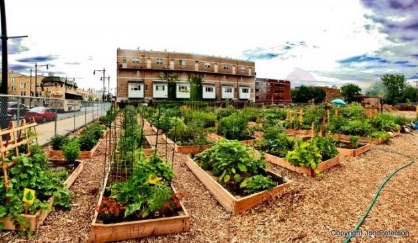Raised bed gardening has been in practice among agriculture enthusiasts for years. Simply put, raised bed gardening is a method that makes use of elevated garden beds to cultivate a variety of crops. Modern raised bed gardens use frames of wood, concrete blocks or timber, and are relatively easy to construct. Gardeners have touted the many benefits of raised bed gardens such as better drainage, increased production and improved aeration.
Raised beds vs. traditional gardens
Raised bed gardening continues to gain traction among gardening aficionados due to a number of benefits that the method possesses compared with traditional in-ground gardening. An article in Natural Living Ideas lists down a slew of important benefits that both amateur and professional gardeners may gain using the raised bed method.
According to the article, raised bed gardening provides better drainage than traditional gardening. The loose texture of soils used in raised bed gardens seeps water, thereby preventing the essential top soil from being eroded. Raised beds also tend to retain soil moisture more effectively than traditional in-ground gardening. This prevents the soil from drying out and subsequently provides enough water for the plans.
In the same manner, the elevated soil allows excess water to be quickly drained from the bed. This makes raised bed gardens popular among tropical areas with heavy rainfall.
Raised bed gardens also provide better aeration for the plants. The loose soil used in raised bed gardens allow better air circulation in the roots. Loose soil also allow air pockets of nitrogen to be converted into essential minerals. The loose soil in raised beds also allow plant roots to spread in every direction, giving them greater access to water and essential minerals in the soil. A well-developed root system helps the plants to yield more produce.
The soil texture in traditional gardens tend to go compacted over time. In contrast, the elevation that raised beds provide discourage animals and humans from casually stepping on the ground, thereby preventing soil compaction.
Compared with traditional in-ground gardening, raised bed provide better opportunities for weed control. Raised beds encounter fewer weeds due to their elevation. The loose soil in raised beds also allow gardeners to easily pull out weeds that sprout from time to time. Raised beds also require plants to be planted right next to each other, which instantly suffocates weeds. (RELATED: Find more news about homesteading and off-grid living at Homesteading.news.)
Pests are also easier to control in raised beds than traditional gardens. Pests normally access plant patches by crawling on the ground. The elevation that raised beds provide, as well as the framing that surrounds it, deters pests from attacking the plants. Placing a wire netting at the base of raised bed gardens may also discourage burrowing animals from running into the plants.
Raised bed gardens also gives gardeners a significantly better yield compared with traditional gardening. Intensive culture, good soil aeration and better root run contribute to this result. Unlike traditional in-ground gardening, raised beds also facilitate faster thawing during spring. This enables gardeners to plant their seedlings earlier. Raised beds may also help extend the plant’s growing season through the use of additional implements such as hoop covers.
In addition, raised bed gardens provide gardeners with great portability. Beds that are not getting enough sunlight, for example, can be easily dragged to another location. The framing can also be easily dismantled, while the contents such as soil and plants can be easily transferred. In addition, raised beds can be practically placed on existing patch or ground. This makes raised beds a convenient method as there is no need to dig up the patch and clear the sods. Traditional in-ground gardening does not provide the same benefit.
Sources:


